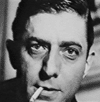 |

INTRODUCTION
THE PLAYBOY 'LIFESTYLE'
PLAYBOY IN BRITAIN
BUNNY TRAINING
FINANCIAL MISCONDUCT
RESOURCES
GALLERY OF
BRITISH BUNNIES
THE HISTORY OF THE PLAYBOY
BUNNY
SITE MAP |

|

|
PLAYBOY IN BRITAIN
Playboy magazine was a financial and cultural phenomenon of postwar
America, in which aspiration and affluence marched to a beat determined
by men. In the 1950s, the British, still recovering from the sacrifices
made in World War II, could only watch Hefner's combination of sex,
conspicuous consumption and the strenuous flexing of literary muscles
with a degree of muted envy: the quest for the perfect orgasm and the
great American novel in a single magazine.
But in the 1960s there was a sea change in cultural hegemony. For a
fleeting period, the cultural torch passed to the other side of the
Atlantic and to 'Swinging London'. The British had a more easy-going
attitude compared to the almost clenched-jaw seriousness of the Hefner
philosophy, and this attitude included a relaxation of the British
gaming laws, enabling Hefner to open a Playboy Club in the heart of the
capital, at 45 Park Lane.
When the club advertised for Bunny Girls, there was no shortage of
applicants - ranging from debutantes to working girls from Dagenham,
many of them joining the Playboy empire in the teeth of parental
opposition. The club offered wages of £35 a week - big money in the
mid-1960s, when added to tips - and a chance to meet the stars, albeit
while squeezed into the agonisingly uncomfortable Bunny Girl outfit.
The boss of the London Playboy Club was the American Victor Lownes, a
friend and business partner of Hugh Hefner. 'UK One', as Lownes was
known, slid easily into the feverish atmosphere of 'Swinging London'.
Hefner always seemed in the grip of his obsession. Lownes, in contrast,
was an immensely attractive and shrewd philanderer.
Next:
BUNNY TRAINING

This article copyright of www.channel4.co.uk. |

|

Victor Lownes

Victor Lownes and friends

London Bunnies |

|
|

